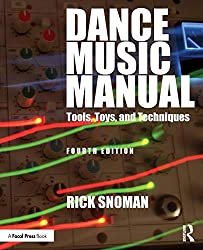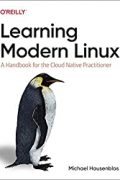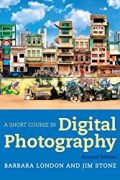
Rating: 7.7/10.
Dance Music Manual: Tools, Toys, and Techniques by Rick Snoman
A textbook about music production aimed at intermediate level producers. I don’t often listen to electronic dance music, but the tools and techniques in this genre often transfer to other genres like pop as well. Compared to other genres, dance music tends to feature more synthetic sound design, and less on melodies, lyrics, and natural instruments. Therefore, a lot of the material is about sound synthesis, which might be not so interesting if you produce other types of music.
This is not a fault of the author, but I guess a fundamental problem with explaining music production through a book is that it’s hard to describe sounds in the English language. This book usually takes the approach of describing sounds by explaining the steps needed to synthesize them, like “take a sine wave, modulate with a sawtooth, use an envelope with fast attack, no sustain, slow decay, use a 12dB low-pass filter with resonance set to high, modulate the resonance with a square wave LFO”. It’s great if you can visualize what this sounds like, but all of this went over my head (a large part of the book is filled with similar synthesis steps).
Ch1. The DAW (digital audio workstation) is the centerpiece of the studio, allows for MIDI and audio tracks and non-destructive editing so that different versions of audio track can share storage, this is good for arranging, which often has a lot of duplication.
Ch2. The audio interface is the bridge between the DAW and the outside world, various types of connectors with different characteristics on noise, latency, number of channels, etc.
Ch3. Monitors are speakers designed to ensure a neutral frequency response so that what you hear is truly the audio you’re editing. They should be calibrated, positioned correctly in the room, and you should pay attention to room acoustics so that the sound you hear is faithful. Headphones are alternative to studio monitors and eliminate the need for room acoustics, but have different challenges like with bass frequencies. Other than good equipment, it’s important to train your ears to be sensitive to you small sound differences.
Ch4. Use appropriate hearing protection to prevent hearing loss from listening to a high volume for a long time.
Ch5. Sound is basically a wave in the air, its most basic properties are frequency and amplitude. Musical instruments produce not only a single frequency sine wave, but also have harmonic content or timbre, but Fourier’s theorem makes it so this is always expressible as a set of frequencies. Amplitude is measured by gain, expressed in the decibel scale (which is exponential, not linear). For humans, the threshold of audibility is different for different frequencies.
Ch6. Subtractive synthesis is basically starting with a wave and applying filters on it to create a sound. The most basic component of a synthesizer is the oscillator, which produces a sine, square, sawtooth wave, etc. You can stack up multiple synthesizers with a detune parameter to produce harmonics, also common to apply a filter such as low pass, high pass or comb. The envelope consists of four components, ADSR (attack, decay, sustain, and release), which contributes to the sound’s textural quality. A LFO (low frequency oscillator) operates on the pitch rather than the sound wave itself.
Ch7. Other than subtractive synthesis, other types of synthesis are FM and wavetable synthesis. In FM synthesis, one signal is used to modulate the pitch of another signal. In wavetable synthesis, you start with a custom waveform instead of a basic one and can interpolate between different waveforms.
Ch8. Modular synthesis is a retro way of doing sound synthesis, basically using different hardware modules and wiring them together to perform synthesis functions such as oscillator, filters, etc.
Ch9. Explanation of how different types of sounds correspond to technical terminology and parameters on synthesizers. You can either synthesize a sound from scratch using first principles, or start from a preset and make modifications to it, but either way, it’s useful to know the principles so you’re not adjusting knobs randomly. Important to not only also consider a sound as a single note, but the musical context of how you will use it.
Ch10. Samplers take a recorded sound and apply synthesizer tools to them. This includes changing the frequency, but changing it too much alters the timbre, so practically you will need to record the instrument once every few notes apart, modern instrument packs usually include multiple velocities at every possible note playable by the instrument. For notes that can be held, the sustain portion is looped, be careful that there aren’t glitches during the looping point. Many genres of music are derived from sampled sounds, including other songs, film and TV, or sounds from everyday objects. Technically, none of this is legal, but using samples from copyrighted material is commonplace.
Ch11. Compressors adjust the gain dynamically based on the level of the sound, this is typically used to reduce the dynamic range and make the louder parts quieter, which consequently makes the overall track sound louder. The threshold parameter sets the level above which compression is applied; the ratio determines how much the level is reduced by. The attack time (also hold, release time) determine how long to wait before the compression turns on, this is useful to prevent it from turning on and off rapidly; peak compressor acts faster than RMS. Some analog compressors have special characteristics and plugins seek to emulate them in software. Side-chaining is popular in dance music, where a secondary signal (typically the kick drum) determines when to apply the compressor.
Ch12. Limiters are a more basic version of the compressor, preventing a signal from ever exceeding a threshold. Noise gates set signals below a threshold to zero and is useful for removing noise in almost silent passages. EQ adjusts different frequencies separately, can be parametric (containing only knobs) or paragraphic (with a visual EQ curve), often used to reduce a narrow band around a frequency.
Ch13. Reverb simulates how a sound echoes off the environment, the most important parameter is decay time; alternatively, the delay makes copies of the sound slightly after the first one. Chorus adds slightly perturbed versions of the sound to create thickness. Phasers, flangers, and distortion are often used as special effects in dance music.
Ch14. DAWs allow you to chain together many effects in any order; the order of the effects makes a difference and is often a creative decision. The conventional order is noise gate followed by compressor then EQ, but other orderings are possible. Auxiliary buses route different parts of the signal to different effects, kind of an extension to the dry/wet parameter. Can group channels to apply effects to a group of similar tracks.
Ch15. DAWs are often combined with analog tools, need to be careful of the signal levels when interfacing between digital and analog.
Ch16. Rhythm. Most common time signature is 4/4 time, where each bar is divided into 4 beats, which can be further subdivided. The first and third beats are downbeats and are usually when you switch chords or switch instruments. Triplets can be used to add variety, or syncopation (putting things on the off-beats).
Ch17. The kick drum is the most important component of dance music and provides the fundamental rhythm. Often want to layer several kicks, but not in a random way which would create a muddle of frequencies. Discussion of how to synthesize each type of drum (eg: kicks, snares, claps, hi-hats), or alternatively they can be sampled too.
Ch18. Process of creating a drum loop: lay down the kick drum first (usually present on every beat), then audition a bunch of samples for other drums like hi-hats, snares, etc. If you find one that’s similar but not exactly what you want, you may need to modify its pitch, envelope, EQ, reverb, etc. Add some random variation in pitch to keep it interesting, also syncopation (adding events on offbeats) and triplets to create more variation in rhythm. Another way of creating drum loops is importing several existing loops and mixing them.
Ch19. Fundamentals of music theory: tones and semitones, major and minor scales, modes. Any root note can be used, but some are more popular for harmonic mixing by DJ’s (since only similar keys can be mixed together).
Ch20. Major and minor chords, ways of notating them and common chord progressions. A chord transition can be “strong” or “weak”; too many strong transitions leads to a chord progression that sounds predictable and cliché, so add inversions, sevenths, suspensions, etc. Modulation is when you change key, usually upwards: use a pivot chord, often a dominant seventh that contains notes from both keys for a smooth transition.
Ch21. Strings are useful for making chord progressions, which for many musicians are the next step after laying down the drums. When used for harmony, they should fade in slowly, but the attack should be faster if they are used for leads, because slower attack tends to be perceived as less important. Pads can be used as a substitute for strings and synthesized to have an evolving texture.
Ch22. Composing leads: musical motifs are often made out of binary phrases, where the first one “asks” a question and the second one “answers” it. Repetition is important and is what makes the melody stick in the listener’s head, dance music has more obvious repetition whereas pop music tries more to hide it, but the repetition exists nevertheless. Lead instruments typically have a fast attack, can use layering and doubling (copying a sound and transposing by an interval) to create more interesting sounds. If the motif is simple, the sound design should be more complex and vary in time.
Ch23. Bass lines. The simplest bass line just follows the root note of all the chords; the next most advanced step is making an offbeat bass that is offset by half a beat from the kick drum. More complex bass lines plays other notes of the chord and just the root note. The call and response model can be used for bass as well, where is the response repeats the motif with a different tone and intensity.
Ch24. A common sound effect is the noise riser, often used before a crash, and is simple to synthesize starting from white noise and applying a rising low-pass filter. Risers can be pitched as well, another effect is taking a crash sample and reversing it in the DAW.
Ch25. Recording vocals. Two types of microphones: dynamic is popular for live music because it is flexible, capacitor / condenser microphones are more popular for studio settings because they are more sensitive, but usually require phantom power, some software try to emulate expensive microphones. Polar pattern determines the microphone’s directional sensitivity, cardoid is usually the preferred choice for recording vocals, but omnidirectional is useful when does speaker doesn’t have prior knowledge of which way to speak. Record vocals with minimal room ambience, and added later with effects, since it’s difficult to remove echoes. Use reflection filters to absorb echoes and obtain a dry sound, but this may limit the artist’s head movement and affect his performance, since they’re basically a box around the head. Use pop shields to reduce plosive sounds. Avoid stopping for mistakes and keep going, since you will often compile together around 20 takes later. Pitch correction has a bad reputation, but is used in most songs, and works better when the pitch is close to correct to begin with. Vocoder makes a voice follow a synthesizer pitch, good if you’re bad at singing.
Ch26. A good song should have a similar dramatic structure as a story or movie plot: an exposition to set the stage, a rising tension, followed by a climax and then a resolution. The motif should be repeated, but not too much, which will be annoying to the listener, instead create anticipation by having the prospect of playing it. A popular way of introducing an instrument is by a white noise riser and cymbal crash, but this is overused and there are other ways of introducing instruments.
Ch27-33. Overview of the main genres of EDM, their musical structure and how the sounds are synthesized. House music evolved out of disco in the 1980s, now it’s kind of a catch out for any uncategorized dance music, usually has 4/4 time signature and around 120 BPM. Techno is fast-paced and focuses mostly on percussion over melody, with the addition of sound effects and vocal shouts. Trance is designed to evoke the feeling of psychedelic drugs, tends to be more melodic than techno. Dubstep is characterized by heavy basslines and 2-step style drums, so that the tempo is around 140 BPM but feels like 70. Ambient / Chill Out aims to not draw much attention to itself, with less heavy basses and real instruments instead of synthetic. Drum & Bass features fast-paced and complex drum rhythms. Dub originated in Jamaica and features rhythms from that region.
When emulating real instruments, it’s important to pay attention to the range of the instrument, that is, not every instrument can play every note. Also need to emulate the natural flow of an instrument and its expressions, such as a guitar’s down and up strokes. For wind instruments, breath controllers measure the breath and sends it as MIDI messages.
Ch34. Mixing is the last creative step of music production, and the goal is to make sure that every instrument can be heard clearly, and to achieve the feeling that you are trying to convey. Human hearing is fallible and we perceive loudness differently depending on frequency. The virtual soundstage emulates a stage and ensures that each instrument has its own place: the back of the stage has more reverb, is quieter, and has a slight pre-delay, So adjusting these parameters creates a front to back perspective. Panning is adjusting the volume of the left and right channels, and sometimes adding a delay to one, to create horizontal perspective. Finally, EQ is useful to remove unnecessary frequencies from instruments. A clean mix should not have multiple instruments in the same space and frequency, as doing so will create a muddled sound.
Ch35. In some genres, each instrument is mixed separately before combining them together, but typically in dance music, the drums are mixed first, then the bass, before additively mixing in more instruments. Avoid two instruments of similar timbres and frequencies, since they will interfere with each other and both would sound quiet. Instead try to remove some non-essential instruments or swap out instruments at different times.
Ch36. Mastering is the final step before distribution, it is the applied to the entire track, so typically you make smaller adjustments here than during the mixing stage. One task is to optimize the loudness level to the requirement set by the platform. Use dynamic EQ to apply EQ selectively during different regions.
Ch37. Promotion. Before releasing your song, have all the branding materials prepared, including a website with your profile, biographies, pictures, logos, etc. Have a presence on all the social media platforms for fans to follow. SoundCloud is useful mainly for sharing unreleased tracks with record labels and other musicians; YouTube is much more popular for non-musicians. Buying per song is rare nowadays, most people consume music through streaming platforms like Spotify (except for DJs who still buy songs), but unfortunately streaming provides much less revenue than album sales. Try to get onto Spotify playlists, reach out to music writers and bloggers to have them write about your release.
Ch38. DJing – can use old school vinyl setups, but more popular now are software like Tractor or Ableton. First choose songs that are suitable to be blended with others. When blending, make sure to not have two overlapping basses at the same time, beat match the two songs, use cue points and looping. Don’t overuse effects just because there’s nothing going on. Harmonic mixing tells you which songs have similar keys (software can auto detect this and use notation like 8A). When playing for a crowd, never play songs of the headlining DJ, but it’s sometimes OK to play their songs after they’ve left for the night.



